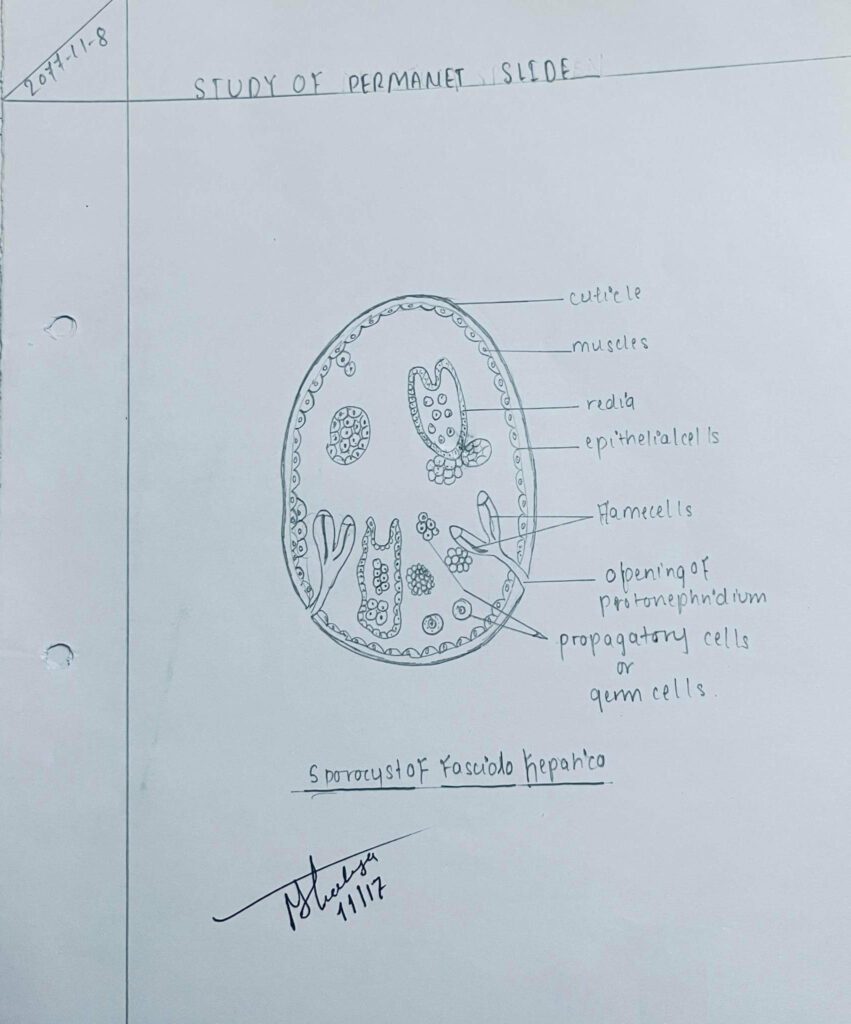Contents: Click for quick access
Comment of Sporocyst OF Fasciola Hepatica
1) Sporocyst develops from the miracidium larva in the pulmonary chamber of the snail.
2) The cilia and hexagonal cells covering the body of miracidium are shed.
3) Apical glands, cephalic glands, brain ,eye spots and the primitive guts of miracidium are degenerated.
4) Sporocyst is an elongated sac-like structure covered with cuticles..
5) Body wall consists of sub-epithelial cells, muscles and mesenchyme.
6) Body sac has flame cells and germ cells.
7) Germ cells multiply and give rise to the next larva stage known as redia larva.
Diagram of Sporocyst OF Fasciola Hepatica

